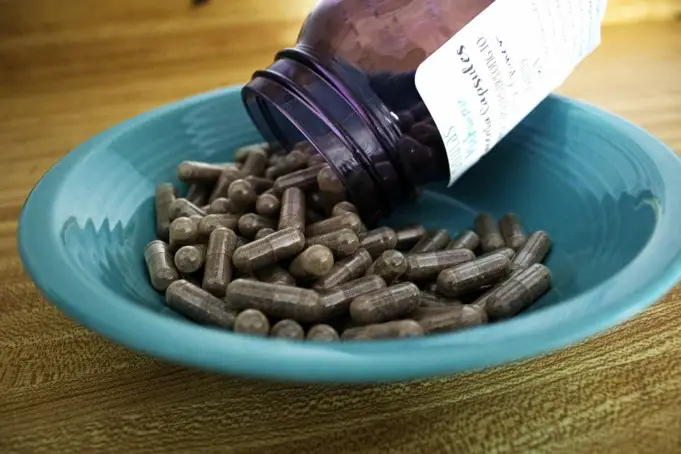Two kinds of people would find this article interesting. People who already know what placenta encapsulation is and would like to know more or individuals who have no clue what it means and are drawn in by the word “placenta.”
If you are someone who belongs in the latter group, this topic may sound a bit weird. However, if you are pregnant you might have already heard about this procedure.
In this post, we are going to lay down the facts about placenta encapsulation including its possible health benefits and risk factors.
As you probably know already, the placenta is an organ that develops in the uterus and its primary role during pregnancy is to supply nutrients and oxygen to the unborn baby. Some mothers are now finding it beneficial to consume the placenta after their babies are born. The process of placenta encapsulation is turning the collected placenta into pills.
As strange as it may sound, the benefits of placentophagia has long been touted in Asian medicine. It’s only now that the practice is gaining acceptance and momentum in Western countries.
What is Placenta Encapsulation?
Placenta encapsulation is the process of turning placenta into pills. The placenta is collected during childbirth and it’s then steamed and dehydrated to drain out the moisture. It’s then powdered and placed inside pills.
What is the Cost of Placenta Encapsulation?
The cost of placenta encapsulation varies greatly depending on the service provider. Companies that perform the encapsulation service charge anything from $150 to as much as $450.
The Possible Health Risks of Placenta Encapsulation
Placenta Encapsulation is not regulated in the United States. That means there is no governing body to oversee the process of turning a placenta into a pill and no safety standards that placenta encapsulation companies need to adhere to. It’s really up to the service providers to create and adhere to their own safety standards.
While it’s not regulated in the United States, placenta encapsulation is regulated in some European countries. Some service providers in the US use that as a model and follow the European safety protocols to keep their clients safe.
The danger of placenta encapsulation is really in the processing. The placenta can contain harmful bacteria and pathogens. It’s through the process of steaming and dehydration that these bacteria and pathogens are killed off.
This essentially means loose safety standards or unhygienic facilities can result in placenta pills being laced with dangerous contaminants and pathogens. These pathogens can not only affect the mother, but the bacteria can be transferred to the baby through the mother’s milk.
Till now, there has been one documented case reported by the CDC of a baby getting infected by streptococcus bacteria as a direct result of the mother consuming dehydrated placenta pills.
There is also the risk of the placenta being contaminated due to improper handling and lack of refrigeration. Facilities that process dozens of placentas also run the risk of cross infection, where pathogens from one placenta pass down to others.
Now, because there are no laws forcing these service providers in the United States to maintain a certain degree of hygiene, the safety of placenta encapsulation varies greatly.
5 Claimed Health Benefits of Placenta Encapsulation
The placenta contains a myriad of beneficial hormones and trace elements. It also contains a healthy amount of essential amino acids. The benefit of placenta encapsulations has been reported by several mothers. Placenta ingestion is said to improve lactation and keep postpartum depression at bay.
The practice of mothers eating their own placenta is not really a health fad. It has been historically practiced and advocated by both Western and Eastern medicine. It’s also a quite common practice in animal mothers who often consume the placenta after giving birth to a newborn.
There have been several studies and publications on human placentophagy (the act of eating the placenta) between the years of 1918 to 2018. In the following section, we are going to list a few of the health benefits of placenta encapsulation as found by these studies. Click here to read the full scientific report.
- Improved Postnatal Mood
- Faster Recovery
- Increase in Milk Production
- Increased Percentage of Protein in Breast Milk
- Increased Weight Gain in Infants
There is no denying that there is a need for further studies to conclusively prove the above-mentioned health benefits. However, countless reports by mothers certainly indicate that there are certain health benefits associated with the practice. Now the question is, does the benefits outweigh the risks?
Should You Get Your Placenta Encapsulated?
As mentioned earlier, the safety of placenta encapsulation depends on the processing standards of the service provider. This means you should only go ahead with it if you are confident about the birthing clinic or the company that’s providing the service.
Some service providers perform the encapsulation service at your home to reduce the chances of cross infection. This is definite a desired feature. You should also consult your doctor before getting your placenta encapsulated. It’s also not a good idea if you have a history of uterine infections as the bacteria often gets transferred to the placenta.
If you get a green light from the doctor and if the service provider is reputable, placenta encapsulation can be safe as well as beneficial.












